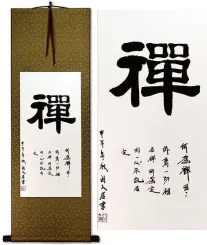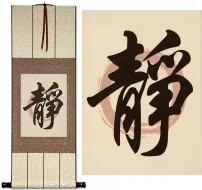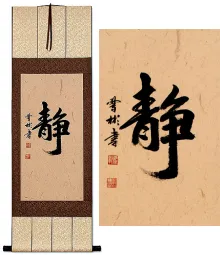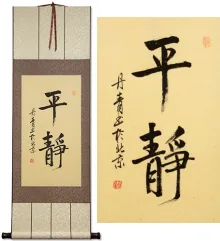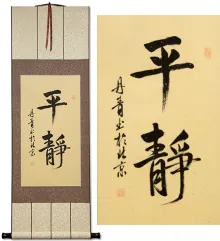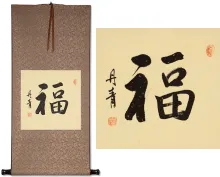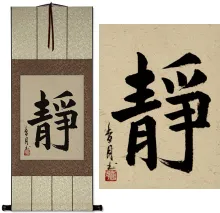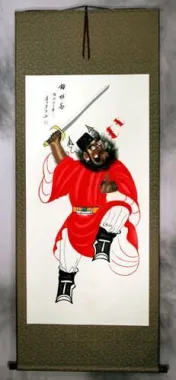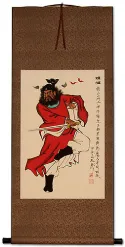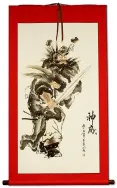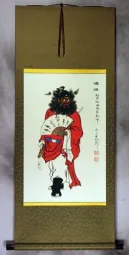Many custom options...
And formats...

The name Keep Calm in Chinese / Japanese...
Buy a Keep Calm calligraphy wall scroll here!
Personalize your custom “Keep Calm” project by clicking the button next to your favorite “Keep Calm” title below...
Keep Calm in Face of Adversity
失意泰然 is a very old Japanese proverb that suggests “keeping calm and collected at times of disappointment,” or “maintaining a serene state of mind when faced with adversity.”
It's hard to relate individual character meanings to the overall meaning unless you also understand Japanese grammar. The word order is very different than English. That being said, here's the character meaning breakdown:
失 To miss, lose or fail.
意 Feelings, thoughts, meaning.
泰 Safe, peaceful.
然 Like that, in that way, however, although.
Using these definitions in English, we might say, “Although you may fail or lose, have a feeling of peace and calm.”
Keep Calm, Be Not Impatient
This in-stock artwork might be what you are looking for, and ships right away...
Gallery Price: $108.00
Your Price: $59.88
Gallery Price: $90.00
Your Price: $49.88
Gallery Price: $200.00
Your Price: $88.88
Gallery Price: $72.00
Your Price: $39.88
Gallery Price: $200.00
Your Price: $92.88
Gallery Price: $103.00
Your Price: $56.88
Gallery Price: $103.00
Your Price: $56.88
Gallery Price: $65.00
Your Price: $39.88
Gallery Price: $65.00
Your Price: $39.88
Gallery Price: $90.00
Your Price: $49.88
Gallery Price: $200.00
Your Price: $109.88
Gallery Price: $108.00
Your Price: $59.88
Not the results for keep calm that you were looking for?
Below are some entries from our dictionary that may match your keep calm search...
| Characters If shown, 2nd row is Simp. Chinese |
Pronunciation Romanization |
Simple Dictionary Definition |
少安毋躁 see styles |
shǎo ān wú zào shao3 an1 wu2 zao4 shao an wu tsao |
More info & calligraphy: Keep Calm, Be Not Impatient |
沉住氣 沉住气 see styles |
chén zhù qì chen2 zhu4 qi4 ch`en chu ch`i chen chu chi |
to keep cool; to stay calm |
沉得住氣 沉得住气 see styles |
chén de zhù qì chen2 de5 zhu4 qi4 ch`en te chu ch`i chen te chu chi |
to stay calm; to keep one's composure |
平静を保つ see styles |
heiseiotamotsu / heseotamotsu へいせいをたもつ |
(exp,v5t) to keep one's temper; to maintain one's composure; to remain calm; to keep presence of mind; to preserve one's equilibrium |
落ち着き払う see styles |
ochitsukiharau おちつきはらう |
(v5u,vi) to stay calm; to keep cool |
The following table may be helpful for those studying Chinese or Japanese...
| Title | Characters | Romaji (Romanized Japanese) | Various forms of Romanized Chinese | |
| Keep Calm in Face of Adversity | 失意泰然 | shitsuitaizen | ||
| Keep Calm, Be Not Impatient | 少安毋躁 | shǎo ān wú zào shao3 an1 wu2 zao4 shao an wu zao shaoanwuzao | shao an wu tsao shaoanwutsao |
|
Successful Chinese Character and Japanese Kanji calligraphy searches within the last few hours...


